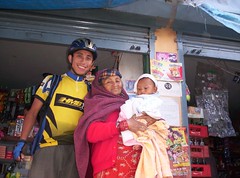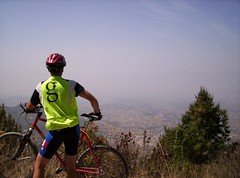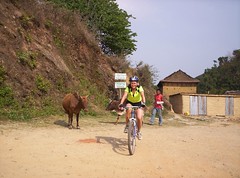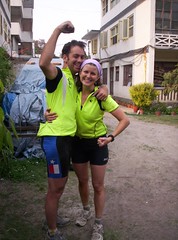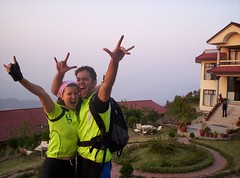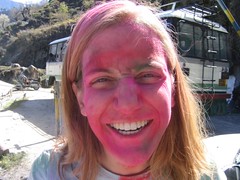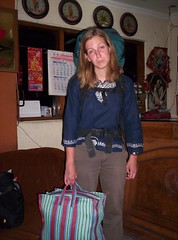First annual Nepali MS150 (just kidding, Mom)
We made it! Holy Toledo, The Nepali MS 150 blew our minds! It absolutely kicked our butts, but we loved every minute of it (well, maybe not quite every minute).
We began at 0700 on Saturday morning with the walk of shame: wearing skin-tight fluorescent yellow spandex through the streets of Kathmandu in a culture that frowns upon the display of flesh. Rickshaw drivers and banana vendors ridiculed us as we walked by, and for once we were glad that we didn't speak the language.
We met our faithful guide, Tilak, a diminuitive Nepali man with massive calves and bulging veins, and we were off! He led us through the dusty backalleys out of Kathmandu, and after an hour of gentle rolling hills, the pain began. Looking back, we're happy that we didn't know what was in store for us, because if we had, we never coulda done it. We ended up climbing (and walking when even the easiest of gears wasn't easy enough for us) from 4000 to 7000 feet up sandy, rocky trails and got white-knuckle thrills on the single-track descent through Nepali villages. We learned that a heaping plate of lentils and rice doesn't digest as easily as Powerbars (duh!). Fifteen minutes before sunset, we dragged ourselves across the Day 1 finish line where we were greeted by Rahul's loving family who fed us beer and noodles 'til we passed out.
On the second day we found our first stretch of pavement (thank god!) and climbed higher. We went down, then up, then down again, and then finally, 150 kilometers (or so) later, we pulled into Kathmandu. Unlike the real MS150, we were not welcomed by throngs of cheering fans, inspirational music, or a teary-eyed Cathy Pearson, but instead by rush hour traffic, a convergence of cows and aggressive bus drivers (but thankfully, no Maoists). At 1645 Nepali time (0600 Texas time, right as the Pearson clan got back on their bikes for Day 2), we finished the ride, exhausted and elated, and missing our loved ones at home more than ever.
Tomorrow morning we take off on a 2-week trek to Everest Base Camp (woooo-hoooo!), so we'll post the full story and all the photos when we get back on May 3rd. 'Til then, we're completely cut off from email so feel free to fill our boxes with love while we're gone. To ease the pain of our absence, here's a few photos from the ride:
